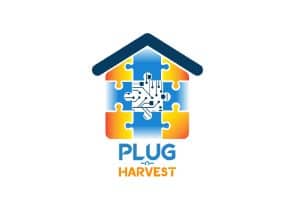What if we told you that a methodology capable of measuring the level of circularity of the five key aspects involved in both building construction and renovation works, had been successfully tested to optimize its activities’ impact and costs?
Yes, we know that sounds good, but considering that the construction activities represent one of today’s most environmentally impactful industries, such an innovation sounds even better. We know that can sound quite a lot to take in, so let’s start from the beginning.
Where does it come from?
Funded by the European Union’s Horizon2020, and within the research and innovation programme of Plug-N-Harvest, Aiguasol, an energy consultancy and engineering based in Barcelona, has developed a pioneer and cutting-edge circularity-calculation methodology in collaboration with EcoIntelligentGrowth.
How does it work?
Considering the endless benefits that circularity offers to society and the planet, we created a tool that aims at meticulously evaluating the five key indicators within circular flow: four expressed in percentual units and a fifth expressed in monetary units. Furthermore, it calculates and expresses a circularity index formulation for each vector, while keeping a life cycle thinking incorporated throughout all its analysis.
On one hand, energy, materials and water, are the three indicators that quantify the number of resources consumed that come from or end in cycled sources. On the other hand, the social impact consists in a count of social measures implemented, whereas the economic value indicator is a simplified life cycle cost analysis.
Diving into the methodology
To be more specific, we will take a quick look at how the circularity index calculation works in one of the indicators mentioned above, for instance, the energy one. The energy consumption is intended to be expressed in primary energy, both non-renewable and renewable, so the units of calculation are kWh of primary energy (kWhPE). This allows adding up energy consumption from different sources. Based on the proposed framework, circularity is measured in terms of the amount of renewable energy produced onsite or nearby and the amount of energy saved relative to total energy consumption.
Equation of the ratio of renewable energy produced on-site or nearby and energy savings to the total energy consumption.
The result? An indicator that expresses the rate of circular energy to the total embedded energy of the evaluated product or system. In other words, “circular energy” refers to all renewable energies or energy savings that are directly related to a single building or district.
What we learned
We all hear about the importance of sustainability and circularity, but is everything sustainable also circular? Despite the popularity of these concepts these days, it may be difficult to understand that the two do not always go hand in hand, especially in the field of energy rehabilitation.
It is for this reason that this new methodology has been applied to conventional retrofit scenarios in order to measure their circularity level. Even with the installation of an efficient solar photovoltaic system on a building in Southern Europe, the results still highlight the poor circularity level of current building envelope designs.
According to one of these studies, only 29% and 21% of circularity are observed for the material and social aspects, respectively, besides long payback periods of up to 20 years for economic aspects. This only proves the need for optimal methodologies that can foresee the problem, and act rigorously to create a solution.
What to expect
The development of this methodology is of great interest to all building and construction sector stakeholders, mainly due to the current lack of evaluation methodologies and indicators in this field. It also represents a fantastic tool for them to reduce its environmental impact while optimizing costs at the same time.
Overall, this innovative methodology approach comes in handy not only for the building industry, but also for other industries considering its highly replicable approach in other fields. For instance, it is possible to value CE measures and even include them as requisites in tenders, by objectively measuring the degree of compliance with Circular Economy principles during the design process.
Thanks to its versatile and efficient framework, it results in a great tool to help push industries forward to more efficient and sustainable business models.


